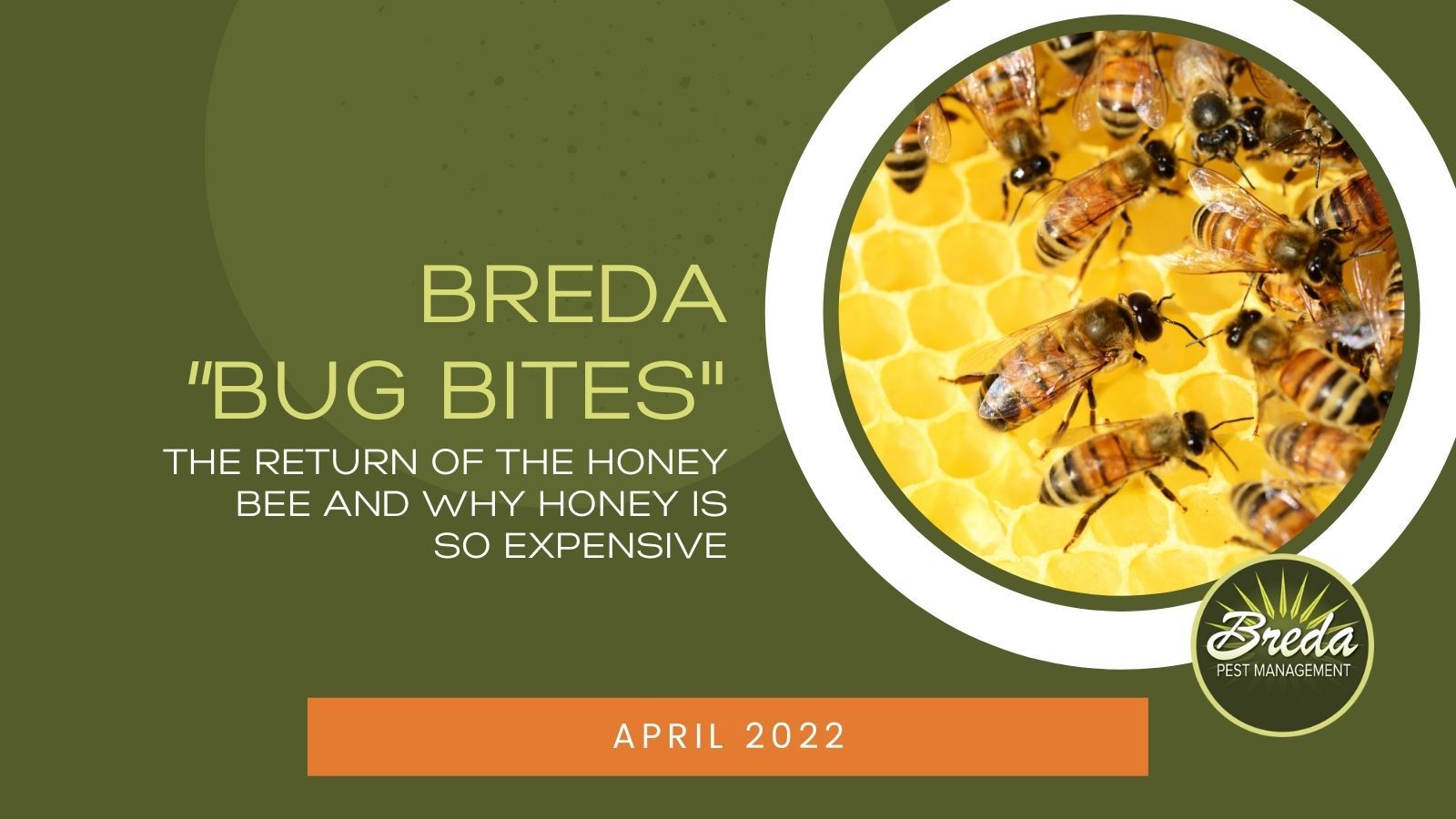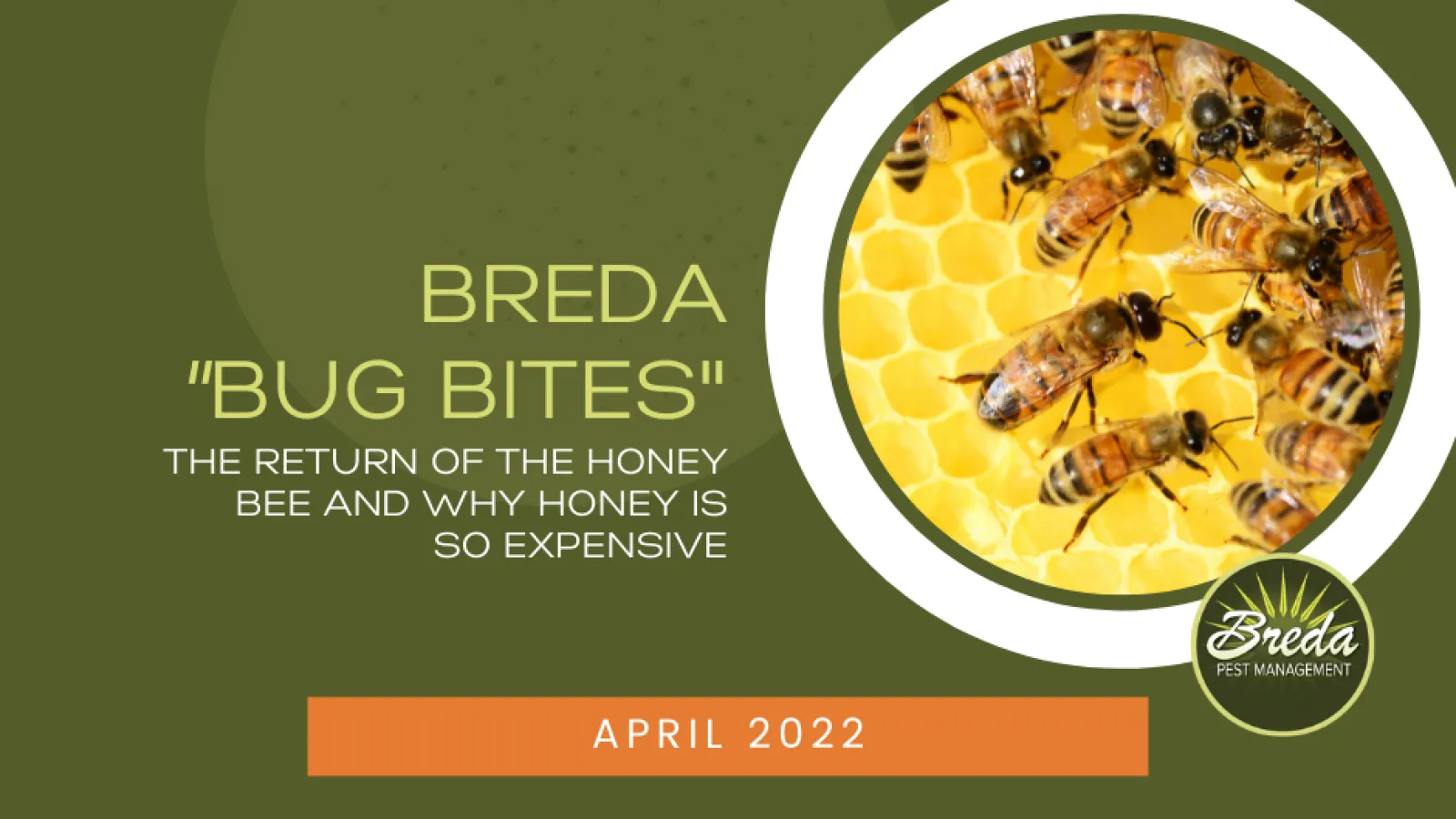
Are you a fan of honey? There really is nothing like a drizzle of it on your favorite breakfast or dessert. If you've been buying honey for a while, you might have noticed some rollercoaster trends in its availability and price. < href="https://www.bredapest.com/bees">Honey bees are a fascinating topic on their own, but when you start to look into the honey industry and see just what drives the cost of that jar of golden goodness, you'll start to appreciate those little winged creatures more. Here are some facts to get you started on your honey bee deep-dive!
Did you know that foraging honey bees have to fly about 55,000 miles and visit around two million flowers to produce a pound of honey?
If you've ever wondered why that jar of local honey (or even store-bought honey) is a bit expensive, this is why. The amount of honey bees required to forage for and create honey is probably a lot more than you had assumed! Another factor to consider is that not all bees in a hive are going out to find pollen and nectar. The queen bee and male honey bees stay back at the hive, leaving the foraging up to the worker bees. Talk about being understaffed and overworked.
Did you know a honey bee makes about 1/12th of a teaspoon of honey in its lifetime?
Yes, you read that correctly: 1/12th of a teaspoon. A literal drop in the bucket! An average number of bees for a hive is around 60,000, so you might think that those little 1/12th contributions will add up quickly, but remember: not every bee is heading out to gather the necessities. To further muddy the waters, honey bees only live six to seven weeks if they're born in the spring or summer. Honey bees born in the fall live longer—up to four months—but they're not able to find resources to make honey like the warmer weather worker bees are.
Did you know that the honey industry is only just beginning to come out of the crisis it faced in 2019?
In 2019, a combination of unfortunate occurrences drove the price for honey high while the production capabilities were greatly diminished. Honey production in 2019 fell 30%, mainly due to environmental challenges like low availability of pollinator-friendly plants and extreme temperatures and lack of rain. One honey bee helper that was hit particularly hard in 2019 was eucalyptus. This plant helps bees produce a large portion of the world's honey, and brush fires, heat, and lack of rainfall caused this plant to struggle, which in turn made honey bees not able to produce enough honey to meet the world's demand. As more consumers switched to honey as a natural sweetener and America as a whole began consuming nearly double what we historically have, the honey industry has struggled to keep up with demand.
Did you know honey bees are most active between 60 - 100°F?
You read earlier that honey bees live much longer in the fall and winter than those who are born in the spring and summer. That's because bees are not actively producing honey in the colder months, so colony members conserve their energy and live longer. When temperatures begin to drop, honey bees will huddle together in a "winter cluster" to produce enough heat to keep everyone alive. In the colder months, honey bees will feast on the honey they produced in the spring and summer, which allows them the luxury of hibernating.
If you find yourself needing pest control and want it handled thoroughly, don't hesitate to give us a call. The BREDA Guarantee promises to fix your pest problem and keep it fixed—no matter the circumstances. Schedule a consultation online or give us a call at 770-466-6700.




